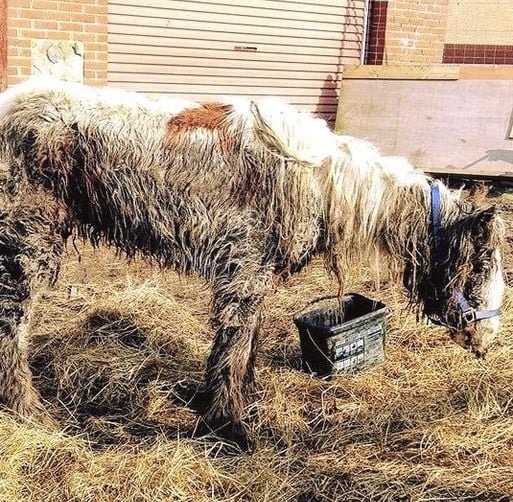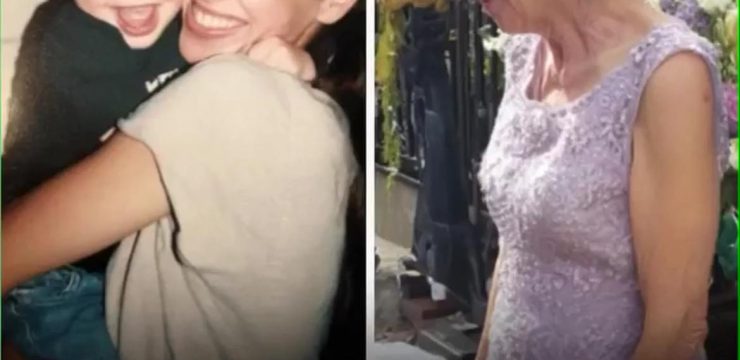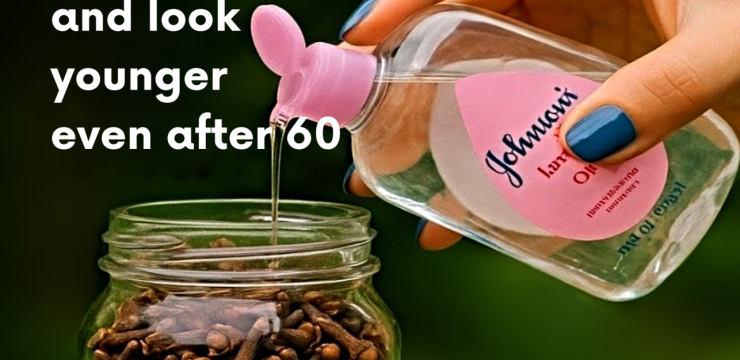At an abandoned construction site in East Durham, England, a group of volunteers from the British Horse Society stumbled upon a heartbreaking scene that would later become a powerful testament to the resilience of life. The site, filled with rubble and discarded materials, seemed lifeless—until a call came in from a concerned passerby who noticed something unsettling. What they discovered was a severely neglected horse, lying motionless in the mud. At first glance, the volunteers believed the animal was already dead. But as they approached, they saw a faint sign of life. The horse, caked in filth and too weak to lift her head, was barely hanging on. She was emaciated, dehydrated, and clearly suffering from prolonged neglect. They named her Heidi.

Recognizing the urgency of the situation, the team sprang into action. According to the Here4Horses Equine Charity, it took five people just to lift Heidi to her feet. The owner of the site had already assumed she was dead and reportedly called to have her body removed. But Wendy Suddes, a spokesperson for the charity, made it clear that the animal’s condition couldn’t be ignored. Regardless of the owner’s assumptions, Heidi had suffered unspeakable cruelty and deserved a chance to survive. When first rescued, Heidi couldn’t stand on her own. Her body was weak beyond belief, her blood protein levels dangerously low, and her internal systems on the verge of shutting down. A plasma transfusion was the first step toward stabilizing her. What followed was a grueling process of healing—physically and emotionally.
Heidi’s recovery wasn’t just slow—it was agonizing. For over five weeks, she couldn’t get up on her own. Her fragile body was riddled with untreated wounds, severe pressure sores, worms, infections, and parasites. Her caregivers had to apply padded dressings to protect her delicate skin, and she received blood donations from healthy horses to sustain her recovery. Every small improvement felt like a victory. But the most remarkable part of Heidi’s journey wasn’t just the medical progress—it was her unwavering will to live. Despite the extreme suffering she had endured, Heidi never gave up. Her spirit remained intact even when her body was at its weakest.
Wendy described Heidi as a fighter—tough, determined, and incredibly spirited. That inner strength, combined with the tireless dedication of her caregivers, was what ultimately saved her. Extreme neglect cases like Heidi’s are rare. Even seasoned rescuers say they only see one or two per year. But Heidi didn’t just survive—she transformed. Over the course of several months, her body began to heal. Her wounds closed, her coat regained its shine, and her once-limp frame grew strong and sturdy. When she finally walked unassisted across a meadow, it was a moment of triumph for everyone involved.
Today, Heidi’s transformation is nothing short of astounding. The skeletal, mud-covered horse who was left for dead is now healthy, radiant, and full of life. Her mane flows freely, her eyes sparkle, and she carries herself with the poise of a true champion. Not only has she recovered—she’s thriving. Heidi now participates in equestrian competitions and has even won several rosettes. She has become a symbol of hope and healing, showing that even the most broken spirits can rise again with love, care, and perseverance. As Wendy proudly puts it, Heidi is “high on life.”
But while Heidi’s story has a happy ending, it also highlights the darker reality of animal cruelty. The people responsible for her condition must be held accountable. No one who allows an animal to suffer the way Heidi did should be allowed to own or care for animals again. Her case is a sobering reminder of how important it is to report suspected abuse and advocate for those who can’t speak for themselves. Heidi’s story is more than a tale of survival—it’s a call to action. It celebrates the resilience of animals and the lifesaving power of compassion. Her journey honors not only her strength but also the dedication of the volunteers who refused to give up on her. And above all, it reminds us that with the right support, even the most hopeless situations can lead to something beautiful.





